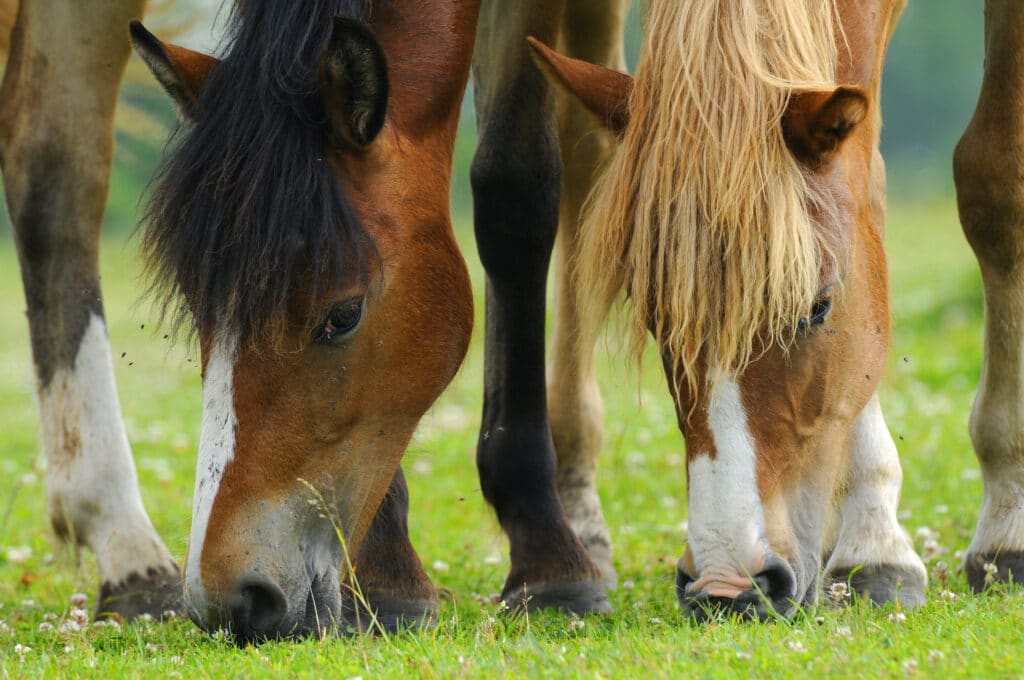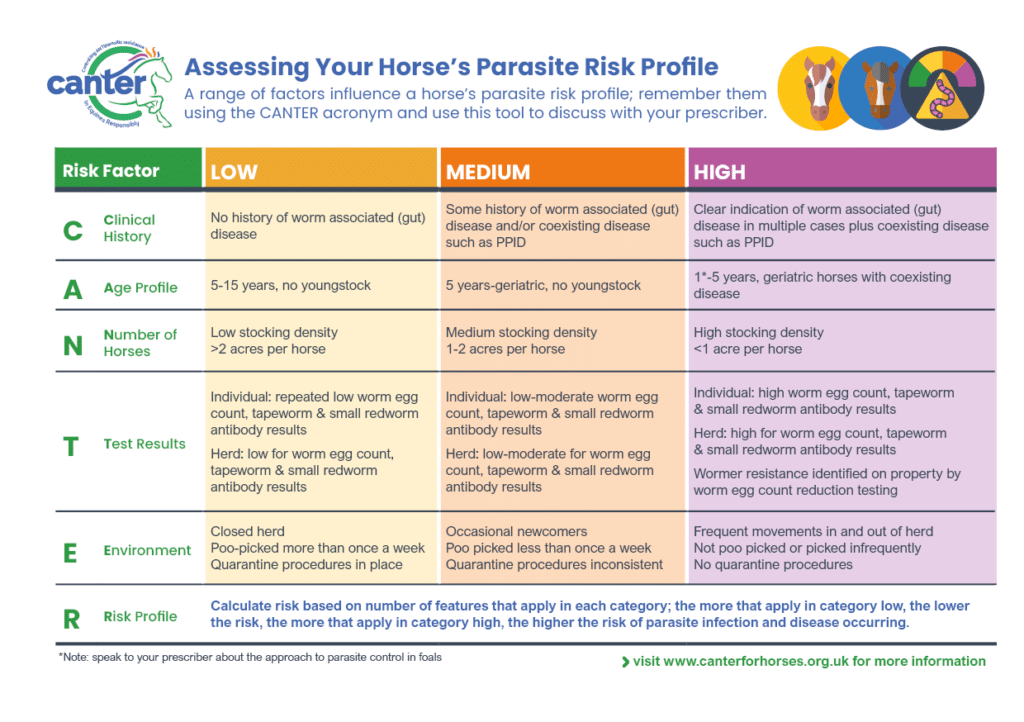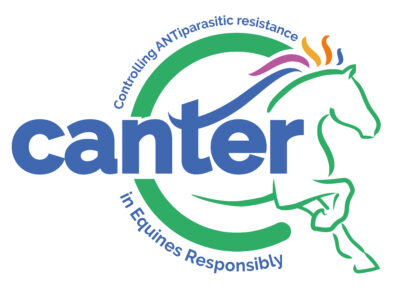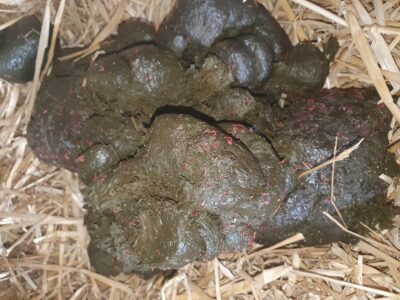Featured, Veterinary, Worming
How do I know when and how to worm a horse?
Diane Gilby, Technical Director at EPLA asks, why do horse owners struggle to know when and how to worm a horse?

How often have you thought or been told by your yard manager, ‘the horses need worming’ but when you look at them, they seem fine so you’re not sure?
This is the most complicated issue where worming horses is concerned. Unless the horse has symptoms of a clinical disease, which a good worm control programme should prevent, their outside appearance has absolutely no bearing on the number of worms on the inside. So
How do you know when your horse is due for worming?
AND
How do you know if your worm control programme is the right one?
The answer is not as simple as it used to be when all the available anthelmintics (chemicals that kill parasites in animals) were effective 100% of the time. Now they don’t always work and, as no new chemicals are being developed, we need to preserve the ones that we do have.
How do we preserve anthelmintics?
The answer is very simple. We only use them when we need to and, when they will be effective against the worms they are targeting.
However, that brings us back to the recurring question of ‘when do we need to worm a horse and, how do we know that the wormer is effective if we cannot tell by looking at the horse?’
Logically, the facts are:
Every horse has a different natural immune system
- This means that if you put 5 horses in the same field they will all pick up a different worm burden from that field.
- If the worm burden is less than the strength of a horse’s natural immune system, then no worming will required, as that horse will do it on its own.
- If the worm burden is greater than the natural immune system, then that horse will require worming.
This also means that if you give all 5 horses the same wormer on the same day then the following will happen
- The wormer will stop working in each horse on a different day, sometimes as much as 6 weeks between them.
- Some horses will be getting a wormer that they do not need.
- Some horses will not be getting enough wormers if they stop working earlier than the others.
This brings us to the point where the first part in any worm control plan should always be a risk assessment of the grazing situation of the horses
- A risk assessment will help guide you to the right strategy for your worm control plan
- It will help you decide how frequently you should be worming and testing
The second part in your worm control plan is testing
- The risk assessment will help you decide how frequently you should test
- Without testing you will not know whether worming is needed or, if your worm control plan is working – as you cannot tell from the outside appearance of the horse
Risk Assessment
A worm control risk assessment has six elements and should be carried out for every horse, before making a worm control plan for the year.

The Clinical history of the horse can mean it is higher risk, either from previous parasite related disease or, a lower natural immune system due to other health issues.
Age, young horses less than 5 years old are much more likely to have worm burdens as they have lower natural immune systems. Foals are born with no natural immunity at all, and develop it as they grow and mature. Natural immunity can also diminish in older horses but, the rate and speed varies according to the individual animal.
The Number of horses is relevant – if your horse grazes on its own then he would be the only “shedder” in the field. As the number of horses grazing the same pasture increases; so does the risk. This risk also applies if a number of horses rotate a single paddock between them – even if only one is out at a time.
Testing, an annual faecal egg count should be included as a minimum in all worm control programmes. The gold standard would be for the worm control programme to be based purely on testing, with worming only carried out where indicated by the tests.
Environment, poo picking really does make a difference. If you collect the dung from the field BEFORE the worm eggs fall out into the pasture then even if your equine has a heavy worm burden it will not contaminate the pasture.
A Risk profile will help you to decide what is the best worm control plan for your equines. It will also help when interpreting faecal egg count results
Case study
A recent faecal egg count in a horse showed a result of 250epg. On its own this would indicate that worming was not required. However, the risk assessment indicated that it was a high-risk individual so, a wormer was prescribed.
The image shows worms that were expelled after worming. This is a great example of how a risk assessment in conjunction with faecal egg counting can help answer the question we started with …
“How do you know when and how to worm to worm a horse?”
Read more about worming horses here
PRIZE DRAW WEEK 2
THE BIG PRIZES …..
 What would you buy with a £100 voucher?
What would you buy with a £100 voucher?
Agaso designs sensibly priced, innovative & durable equestrian apparel for free spirited riders who live in the moment and never want to dismount.
Agaso breeches have been designed with over 40 years of experience training riders at the top level, thinking about the biomechanics of the rider interacting with the horse. Every detail is created for ultimate comfort in the saddle. Water resistant, durable, soft touch material with natural elasticity moulds to the contours of a rider’s body. Innovative open flat seams ensure ultimate comfort against the skin with no rubbing, with gel seat technology to create real feeling between rider and horse keeping the rider connected to the saddle.
Our new denim breeches have a soft touch material with 4-way stretch allowing superb comfort for hours in the saddle. AGASO
 The parasite control programme from EPLA is a bespoke programme written specifically for the prize winning equine. The programme is based on a complete risk assessment of the equine, its history and grazing situation together with diagnostic tests. Every test and wormer will be despatched automatically when they are due and will arrive in the mail with application instructions. Every diagnostic test result is reviewed by the consultant and the plan is proactively amended and updated throughout the year as required. INTELLIGENT WORMING
The parasite control programme from EPLA is a bespoke programme written specifically for the prize winning equine. The programme is based on a complete risk assessment of the equine, its history and grazing situation together with diagnostic tests. Every test and wormer will be despatched automatically when they are due and will arrive in the mail with application instructions. Every diagnostic test result is reviewed by the consultant and the plan is proactively amended and updated throughout the year as required. INTELLIGENT WORMING
THE WEEKLY PRIZES …..
Every week 10 correct entries will win a worm egg count test and analysis from Scientif EQ

Fatal worm disease
The threat of fatal worm disease is so serious, that for the first time in the history of the UK, an industry wide collaboration has formed. It includes retailers, vets, laboratories, universities, charities, and pharmaceutical companies, along with representation from most of our equine bodies. This is a very big deal – competing companies are putting their own interests aside to collaborate on one single truth for all prescribers and horse owners in the UK. CANTER
The Horse Hub T&Cs
All you have to do is submit your email address and answers to the question and you will be added to our mailing list and entered into the draw for this competition. We also don’t want you to miss any of our great content, which is why we have created our newsletter.
Our newsletter is sent weekly and is packed full of great content. You can remove yourself from our mailing list anytime, just let us know.


 What would you buy with a £100 voucher?
What would you buy with a £100 voucher?